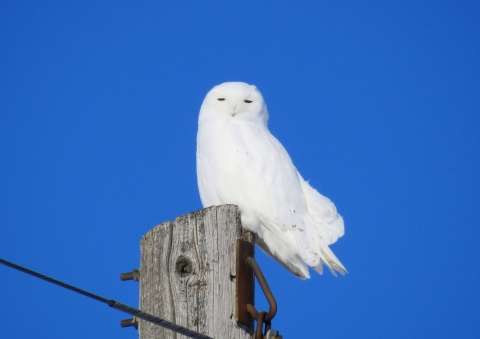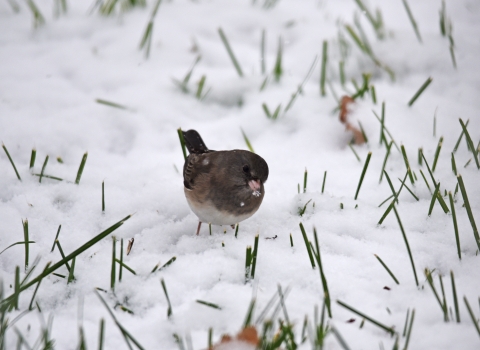Have you noticed that the number of birds visiting your yard each winter seems to fluctuate year to year? Some years it may seem that you have an abundance of birds, making it difficult to keep feeders stocked, while other years seem much more manageable. What you might be experiencing is called an irruption – a sharp, irregular movement of birds to an area where they aren’t normally found. While this may seem unusual, it’s more common than you might think. We at the U.S. Fish and Wildlife Service want to explain this phenomenon to help you better understand and appreciate your winter bird sightings.
How are irruptions different than migrations?
Typical migrations consist of predictable, regular movements within a specific time frame and between the same geographic areas. Migration is driven by instinctive responses to environmental cues related to seasonal changes. Irruptions are a different, less predictable type of migratory behavior. While irruptions are complex and not fully understood, it is believed that these dramatic, irregular movements are often triggered by a lack of food in a bird’s typical range.
Irruptions can result in birds being spotted outside of their typical home range. In extreme cases, birds may wander hundreds or even thousands of miles from their typical winter ranges. A wide variety of birds can have irruptions, including owls, hawks, shrikes, waxwings, nuthatches, chickadees, a variety of finches and many kinds of woodpeckers. If you watch closely, you may be lucky enough to spot a bird that’s uncommon in your area and see some new birds for the first time.
What causes irruptions?
Irruptions are driven by a predator-prey relationship. In the case of irruptions, the predators are birds and the prey are a wide variety of foods, ranging from seeds and fruit to rodents and other animals - even other birds. You may not be used to thinking of seeds as prey, but that’s the reality for the plants producing those seeds. Each seed eaten results in a lower chance for the plant to reproduce. Plants combat this by releasing super abundances of seeds when possible. In these years, there is way more food available than what is needed for seed-eating birds to survive. As a result, the birds and the plants are able to thrive. The birds can remain in their winter habitat without having to travel in search of food and the plants have produced so many seeds that there are plenty left to germinate in the warmer months and eventually grow into mature trees.
Why don’t birds consistently use my feeders?
If you aren’t seeing many birds at your feeders, you may worry that bird populations aren’t doing well, when in fact, this may be the complete opposite. Keep in mind that birds almost always prefer natural food sources. A lack of birds at your feeder may be the result of abundant natural food sources.
In years when conditions aren’t favorable for seed production, trees conserve their energy and make fewer seeds. During those winters, many birds have no choice but utilize any other available food sources, including your bird feeders. This is when you’re likely to experience large numbers of birds visiting your yard.
Whether it’s a busy or slow season at your feeder, we hope you continue to enjoy winter bird watching and have gained a better understanding of the driving force behind the variation you see.









